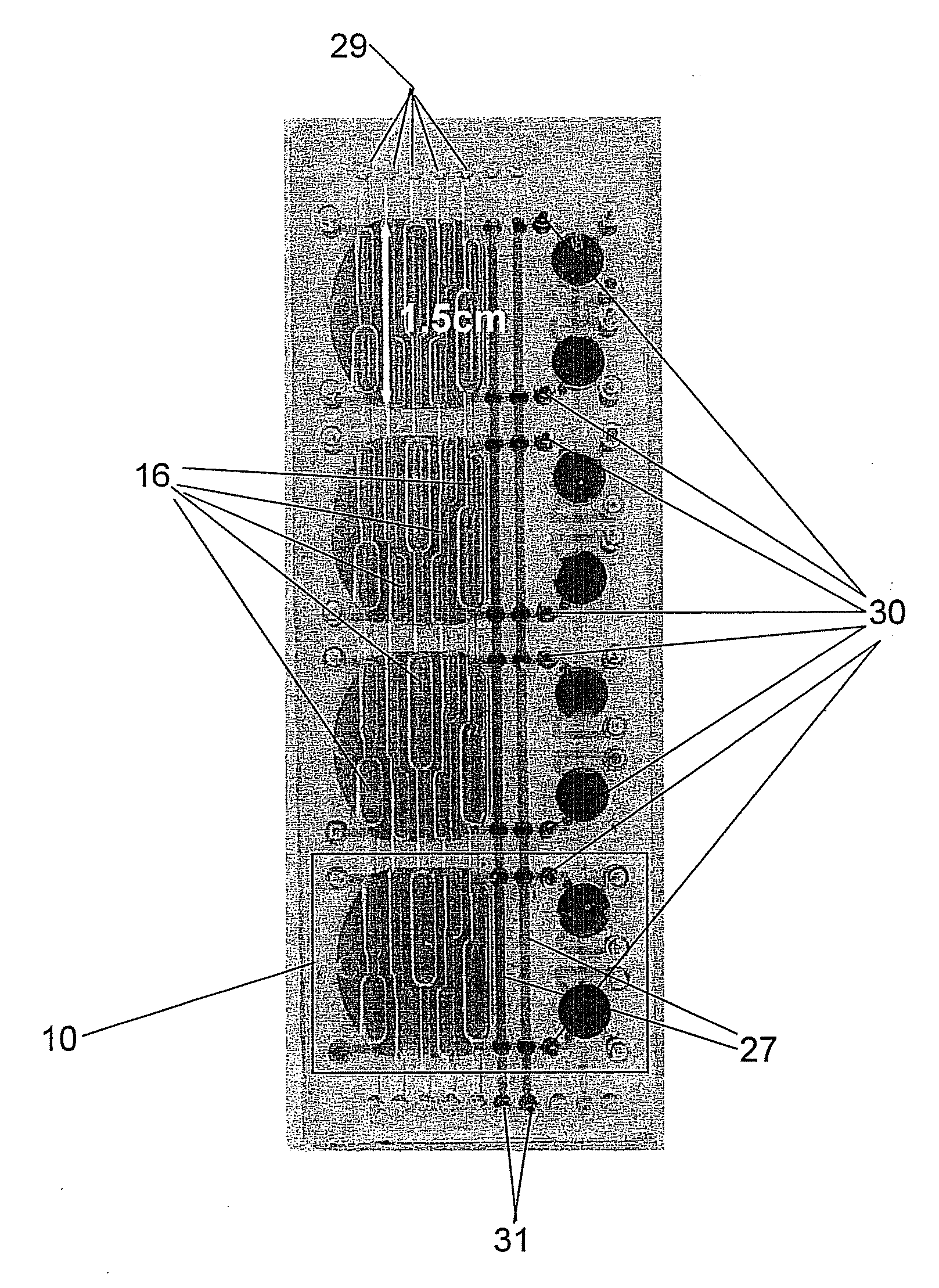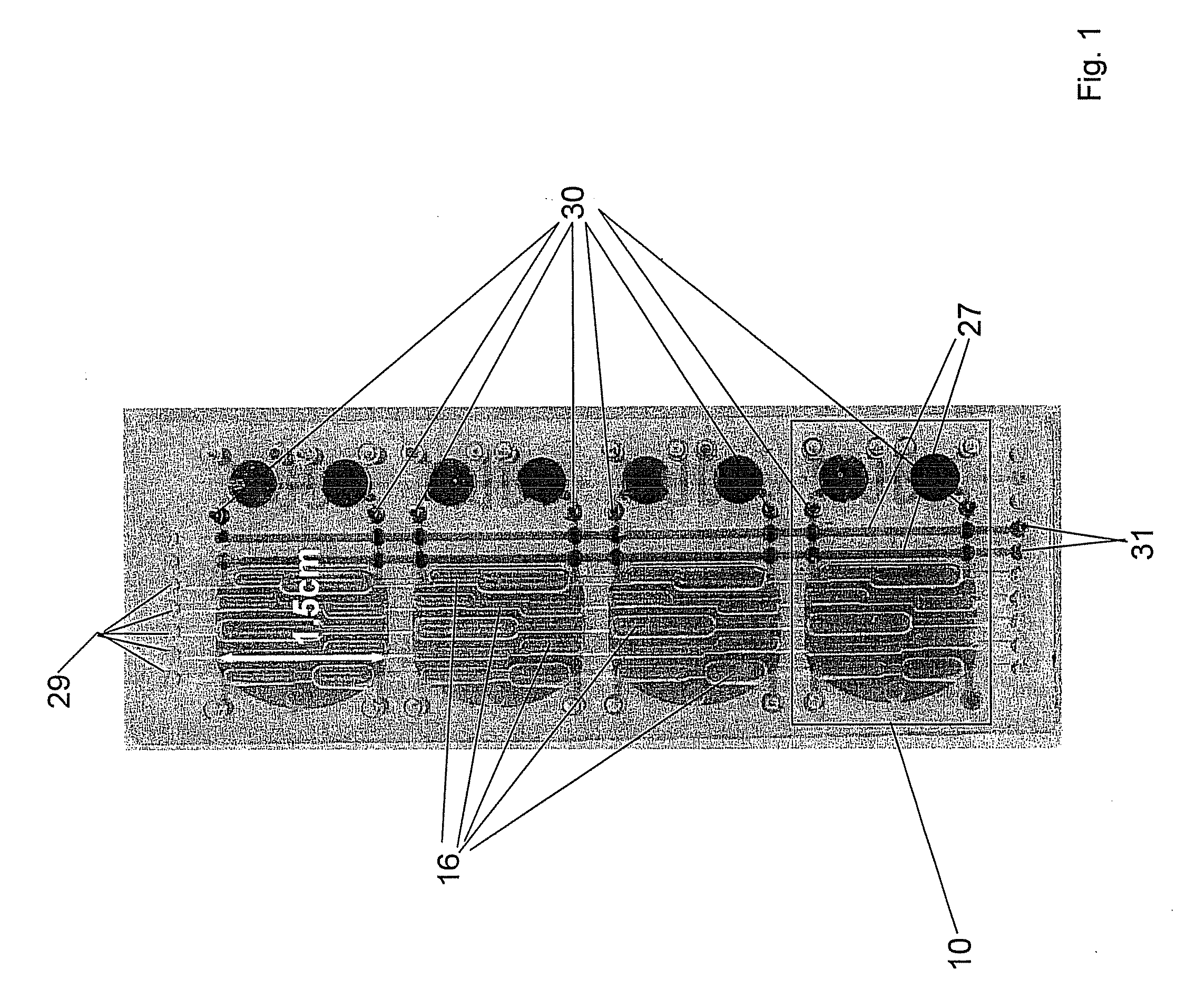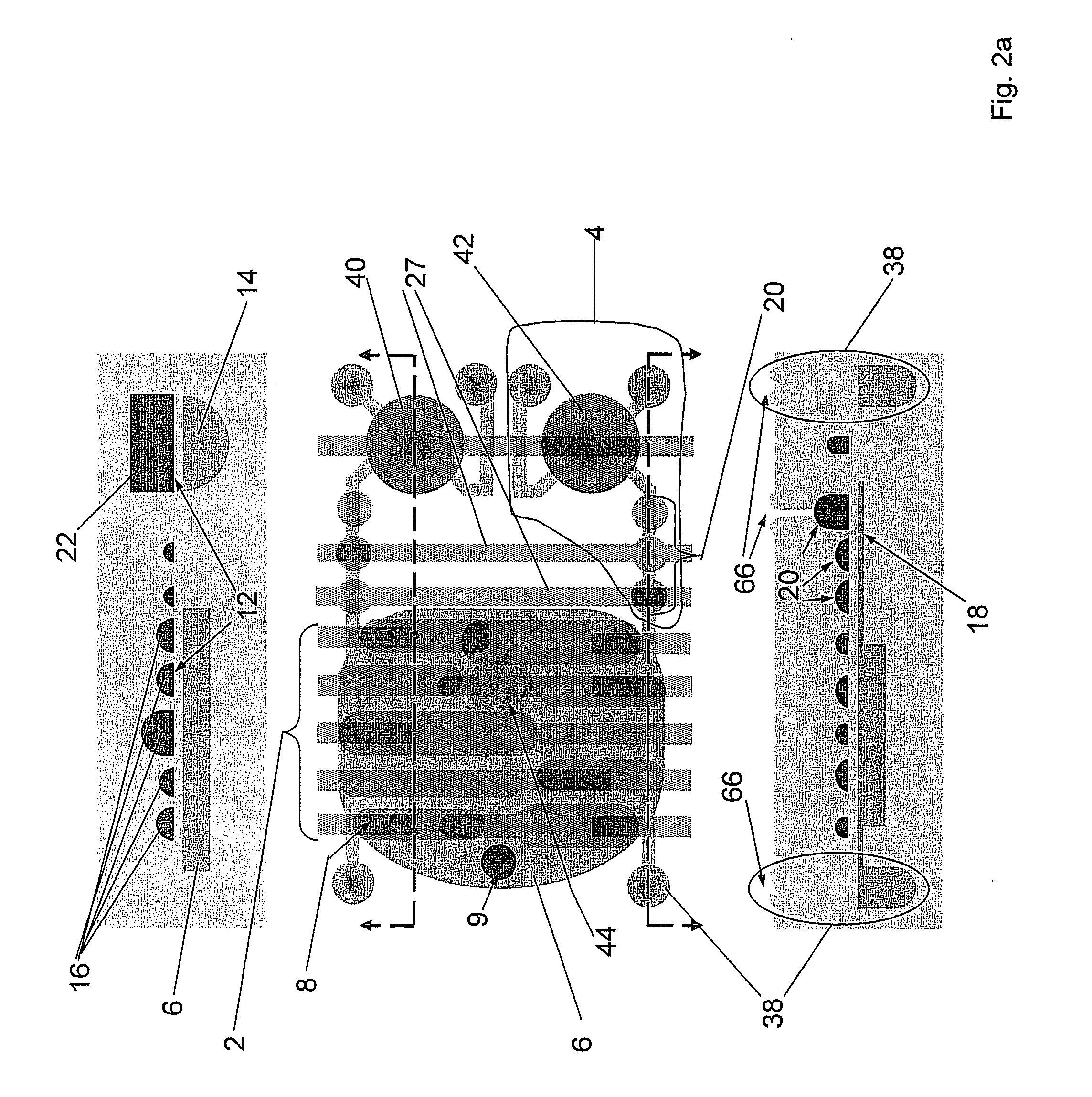Parallel integrated bioreactor device and method
- Summary
- Abstract
- Description
- Claims
- Application Information
AI Technical Summary
Benefits of technology
Problems solved by technology
Method used
Image
Examples
example 1
Materials And Methods
[0116]Using the device as shown in FIG. 1, four sulfite oxidation experiments were run simultaneously wherein the pH control was activated only in two reactors. The device was mounted into an interface module and the fluid injector actuation lines were activated. Approximately 20 μL of 1M HCL was injected into the acid reservoir, and 20 μL of 1M NaOH was injected into the base reservoir, using a syringe and fine gauge needle. The acid / base lines were primed such that a small amount of acid / base was injected into the empty reservoirs. An identical solution of 100 mM of sodium sulfite in 100 mM dibasic phosphate was injected into all four reactors via a syringe and fine gauge needle. Since sulfite is a weak base with pKa=6.8, it has a buffering capacity of around neutral pH. When sulfite is oxidized into sulfate, the buffer capacity is lost and the pH decreases. The peristaltic oxygen mixers were activated in each of the bioreactors. Before the solutions were inje...
example 2
Materials And Methods
[0118]Using the device shown in FIG. 1, reactors were run wherein fluid injections supplied acid and base to the growth chamber (filled with 100 mM phosphate buffer), and a pH sensor measured the pH of the growth chamber after each injection. The first reactor received an injection of 270 nL acid (1M HCl) and base (1M NaOH) every two minutes for two hours.
Results
[0119]FIG. 4a shows pH versus time wherein the markers indicate the pH measurement after every second pH injection. FIG. 4b is a zoom view of a portion of the pH versus time graph shown in FIG. 4a. FIG. 4b shows that the injected base is mixed into the growth chamber within fifteen seconds. This is indicated by the sharp steps in pH after each injection. The markers of FIG. 4 indicate every other acid or base injection. FIG. 4c shows agreement with a direct alignment with a conventionally measured titration curve, verifying the accuracy of the estimated injected volume (e.g., 270 nL). Aligning this titra...
example 3
Materials And Methods
[0120]The fluid injectors shown in FIGS. 1 and 2 consist of a 16 μL hemispherical fluid reservoir sealed with a flexible membrane, which can be deflected by pressurizing the chamber above, and an injector channel gated by three pneumatically actuated membrane pinch valves, which meter the fluid. Pressurizing the fluid reservoirs served to help open the pinch valves and ensure injection against backpressure. The mixing tubes and pinch valves were actuated pneumatically as described above, and the mixing tubes and two metering valves are shared for the economy of the pneumatic switches.
[0121]Mixing was accomplished by approximating peristalsis in the 85 μL growth wells by pressurizing the mixing tubes two at a time in a propagating pattern, generating a circulating flow across and around the well.
[0122]The devices were fabricated using two molded PDMS (Dow Corning, Sylgard 184) layers and a 70 μm thick PDMS membrane, bonded with a partial cure bond. Master positiv...
PUM
 Login to View More
Login to View More Abstract
Description
Claims
Application Information
 Login to View More
Login to View More - R&D
- Intellectual Property
- Life Sciences
- Materials
- Tech Scout
- Unparalleled Data Quality
- Higher Quality Content
- 60% Fewer Hallucinations
Browse by: Latest US Patents, China's latest patents, Technical Efficacy Thesaurus, Application Domain, Technology Topic, Popular Technical Reports.
© 2025 PatSnap. All rights reserved.Legal|Privacy policy|Modern Slavery Act Transparency Statement|Sitemap|About US| Contact US: help@patsnap.com



